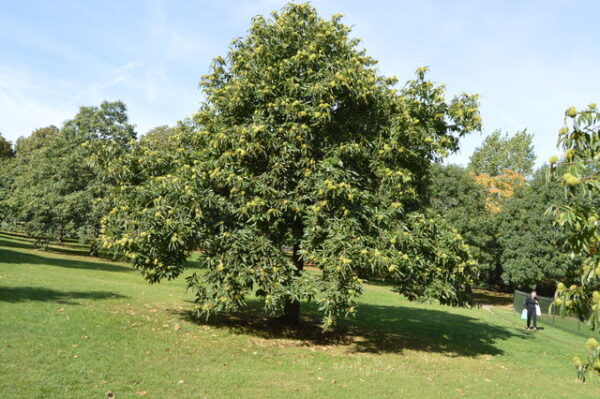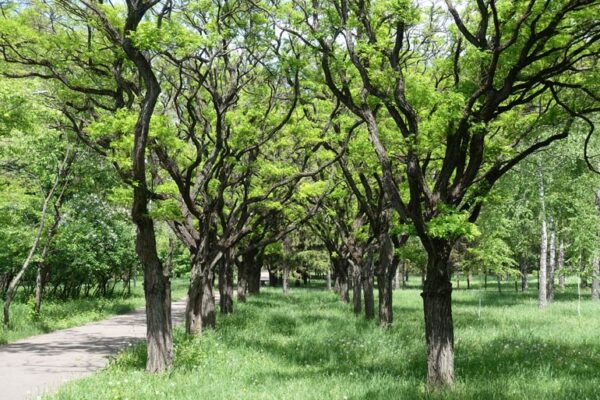Description
Vetiver grass (Chrysopogon zizanoides) is a sterile, non-running, clumping perennial grass known for its incredibly deep root system capable of growing 9-15′ deep depending on soil conditions. In addition to its amazing erosion control and self-terracing capabilities, vetiver grass is utilized around the world for biological remediation and soil decontamination, sewage treatment, livestock cut forage, crafts, and essential oil making, amongst many other uses. Vetiver grass is native to India, and can grow in environments ranging from harsh deserts to very wet tropics to mediterranean climates to warm temperate zones. It can withstand freezing as long as the ground does not freeze (the top will die back, but it will resprout provided the basal nodes haven’t frozen). It has been successfully grown in USDA Zone 8, and we are currently trialing vetiver grass in USDA Zone 7a here at Honey Badger Nursery (it has survived being buried for a week in snow while in above ground pots – we think if we leave it with a full head of hair headed into winter it’ll do just fine).
Vetiver grass is incredibly productive in terms of biomass production – up to 45-60 tons per acre per annum in the tropics. Vetiver grass clumps can grow up to 2 feet in diameter and up to 6’ tall within their first growing season with consistent water and lots of sun. It is very drought hardy once established.Vetiver grass can grown in both extremely acidic and extremely alkaline conditions (pH 3.0 to 12+), including brackish areas and seashore areas.
Common Applications For Vetiver Grass
1. Erosion Repair & Prevention
Vetiver grass is unique in its fantastic ability to completely halt sheet flow erosion. Because the clump is so dense, it creates a backstop behind which sediment can build up. Instead of this killing the plant, vetiver is capable of rooting into this new build up even when buried via nodes on mature stems. In this way, over time vetiver ‘self-terraces’ creating level contour paths of sediment held in place by its thick culms and dense, deep root system.
For erosion control on moderate-steep slopes, vetiver grass slips are typically planted on contour in a narrow trench (4-6” wide), approximately one every 4″. When planted at this spacing and provided with establishment irrigation, the vetiver slips will grow into a solid wall of culms that acts as a ‘biological retaining wall’ – a self-repairing structure that gets stronger and more effective as it gets older instead of vice versa. Once the planting trench is dug, it is underlain with burlap (mainstream methods suggest using aviary wire to hold back ground vermin until plants are establish, but this is non-biodegradable and good success has been observed using burlap for the same purpose) and then filled with compost or rotted steer manure (1 cubic foot of rotted manure fills ~ 6’ of trench). The high nitrogen compost or manure helps the young slips to grow rapidly and set their roots.



2. Living Terrace Formation
Vetiver grass planted along contour at 4″ spacing will grow together to create a thick wall of stems, behind which sediment and organic material borne by water and wind will collect and build up. Vetiver culms root at nodes, and when a node gets buried or is put in contact with accumulated sediment, it will root into that sediment, stabilizing it and allowing the continued growth of the grass. In this way vetiver is self-terracing, and the terraces it creates will become broader and more level with time, unlike non-living terraces made with rock or masonry materials, which themselves will move with the shifting earth, eventually failing.
This amazing quality of vetiver grass is tremendously beneficial at jumpstarting revegetation and ultimately reforestation of barren, steep, eroded slopes where previously no organic material or seeds could be held long enough to take root and grow. Any vetiver line planted on contour, provided the slope is at a reasonably traversable angle, will create a level pathway across the slope’s face, which can be used to access parts of steep slopes that previously were too difficult to reach to utilize in a productive manner.
If you live some place that is steep and sunny, consider employing the self-terracing nature of vetiver as one potential way to create more usable and accessible land.
3. Livestock Cut Forage And Bedding
Vetiver grass is a nutrient and mineral rich livestock feed for horses, cattle, sheep, goats. It makes an excellent bedding for pigs and other livestock systems. Vetiver grass can be ensilaged to make hay. It can also be grazed free-range. In areas where free-range grazing is not possible, vetiver makes a tremendously productive and completely renewable source of high-quality cut forage that can be brought to penned animals.
Vetiver grass makes an excellent forage given its high yield, nutritional density, tolerance of extremely adverse conditions (drought, flood, fire etc), high adaptability to different soil types (clay, hardpan, sand etc), tolerance for a broad range of growing conditions (extreme pH, alkalinity, salinity, sodicity), tolerance to most agricultural insecticides and herbicides, and most pests and diseases. See the TVNI presentation on Vetiver Forage and Biomass for more examples.
4. Essential Oil And Crafts
The roots are used to make a high value essential oil, and can be woven into mats, bags, and screens used for filtering water. They can even be made into shoes! The blades of grass, when dried, are woven into screens and floor mats. See the TVNI presentation documenting the use of vetiver roots and shoots for crafting around the world.
5. Bio-Remediation
Vetiver is useful in reclaiming toxic or damaged landscapes, and is capable of binding heavy metals and other persistent pollutants. These pollutants and heavy metals are retained in its root mass, leaving the shoot mass contaminant free and usable as fresh or dry feed for livestock.
















Reviews
There are no reviews yet.